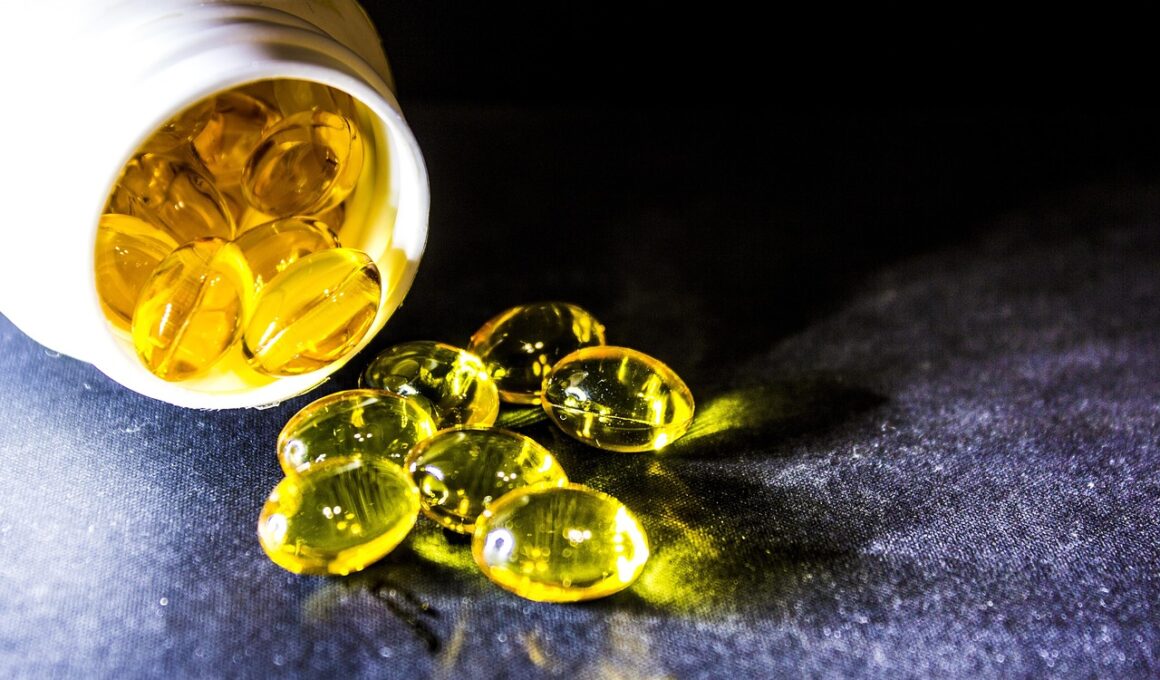The Impact of Omega-3 Fatty Acids on Inflammation and Recovery
The role of omega-3 fatty acids in sports recovery cannot be overstated for athletes aiming to optimize their performance. These critical nutrients, primarily found in fatty fish, flaxseeds, and walnuts, offer immense benefits in reducing inflammation. Athletes frequently experience muscle soreness and fatigue after intense workouts, and omega-3s can assist in alleviating these symptoms. Studies suggest that the incorporation of omega-3 fatty acids into a diet helps decrease exercise-induced inflammation, promoting a faster recovery time. Including sources of omega-3 such as salmon, sardines, or chia seeds provides essential fatty acids that enhance muscle recovery. When the body’s inflammation is reduced, athletes can return to training much quicker without the prolonged effects of soreness. Recovery nutrition is key for sustaining optimal performance, and omega-3s should be prioritized as part of that nutrition plan. Educating athletes about the benefits of these fatty acids can lead to better nutritional choices and improved recovery outcomes, helping them adhere to their training schedules more effectively.
In addition to reducing inflammation, omega-3 fatty acids also influence muscle protein synthesis, a crucial factor in recovery. The synthesis process is essential for muscle repair, growth, and adaptation following strenuous exercise. Research indicates that incorporating omega-3s may enhance this process by stimulating the pathways responsible for muscle repair. Consequently, those who consume adequate amounts of these essential fats post-exercise may experience greater gains in muscle strength and mass over time. This improvement can be particularly beneficial for athletes looking to enhance their overall performance and physical capability. Furthermore, omega-3s may help preserve lean muscle mass, which is often a concern during intense training periods or caloric deficits. Athletes should consider complementary foods rich in omega-3s along with their standard post-exercise meals. For instance, a smoothie with a scoop of flaxseed or a fish-based meal could significantly impact recovery nutrition. Staying proactive with ensuring omega-3 intake may contribute significantly to athletes’ long-term health and performance sustainability.
While understanding the benefits of omega-3 fatty acids, it’s essential to explore the various types and the best sources available. There are primarily three types of omega-3 fatty acids: ALA, EPA, and DHA. Alpha-linolenic acid (ALA) is plant-based and found in sources like walnuts and flaxseed. Eicosapentaenoic acid (EPA) and docosahexaenoic acid (DHA), primarily sourced from fish, are more potent in their anti-inflammatory effects. Athletes are often encouraged to focus on EPA and DHA for quicker recovery benefits. Consuming fatty fish two to three times a week, or considering supplements if necessary, may ensure adequate intake levels. Alternatively, vegetarian athletes can achieve their omega-3 needs by incorporating algae-based supplements rich in both DHA and EPA. Education surrounding omega-3 contents in foods should be part of athletes’ nutritional training and recovery strategies. Optimizing omega-3 consumption should not only contribute to improved recovery post-exercise but also promote better overall well-being and enhance athletic longevity. This knowledge empowers athletes to make informed dietary decisions.
Omega-3 Fatty Acids and Immune Function
Apart from inflammation and muscle synthesis, omega-3 fatty acids also play a vital role in maintaining immune function for athletes. A robust immune system is critical in preventing illnesses that can sideline athletes, particularly during intense training. Studies show that regular intake of omega-3s is associated with improved immune responses, which is especially important during high training loads. Proper recovery nutrition—encompassing sufficient omega-3 intake—can enhance the body’s defense mechanisms against viruses and bacteria that may threaten athletes’ health. Furthermore, omega-3s have been shown to modulate inflammatory responders, which can help individuals recover quickly from common colds. Athletes train hard, pushing their bodies and need to be strong; having omega-3s in their diet boosts their immune readiness. Prioritizing omega-3 fatty acids may help to maintain good health, lower the risk of infections during stressful training regimens, and ensure athletes remain on track without interruptions, ultimately benefiting their performance and goals.
Moreover, the timing of omega-3 intake significantly affects recovery effectiveness. Consuming omega-3s post-exercise may maximize inflammation reduction as the body begins to repair damaged tissues. This is an important consideration in recovery nutrition strategies; therefore, pairing omega-3 sources with protein carbohydrates and hydration can provide synergistic benefits. Athletes should aim to consume omega-3-rich foods as part of their recovery meals or snacks within 30 to 60 minutes after workouts, promoting optimal absorption and efficacy. Simple combinations, like a tuna salad sandwich or a smoothie with added chia seeds post-training, can satisfy nutritional needs while aiding recovery. Coaches and nutritionists must work diligently to develop effective post-exercise nutrition strategies centering around omega-3s. Emphasizing the role of omega-3s in recovery plans creates a more holistic approach, potentially leading to significant performance improvements. By harnessing the power of omega-3s at the right times, athletes may further enhance their training outcomes.
Potential Risks and Recommendations
While omega-3 fatty acids offer numerous health benefits, it’s crucial to consume them in moderation and be aware of any potential risks. High doses of omega-3s may lead to adverse effects, such as gastrointestinal discomfort or increased bleeding risk in some individuals. Athletes should refrain from megadoses and consult healthcare professionals about appropriate limits. The recommended dosage typically varies between 250 to 500 milligrams per day for general health, which may increase for athletes with specific performance goals. Transitioning to a diet rich in omega-3s should be done gradually, especially if incorporating fish oil supplements into a routine. It’s also pertinent to choose high-quality sources of omega-3s available in the market, verifying if supplements contain adequate amounts of EPA and DHA. Reliable brands often undergo third-party testing to ensure quality and purity. Not every supplement is created equal, and athletes must educate themselves to make informed choices that support both their training and overall health.
In conclusion, omega-3 fatty acids stand out as essential components of recovery nutrition for athletes aiming to reduce inflammation, enhance muscle recovery, and support immune function. Their role in improving overall well-being contributes to sustained athletic performance. By incorporating omega-3-rich foods and ensuring proper intake timing, athletes can expedite their recovery processes while experiencing additional health benefits. Understanding the distinction between different types of omega-3s can guide athletes in making smarter dietary choices that align with their performance goals. Moreover, awareness of potential risks associated with omega-3 supplementation is critical to ensure safe consumption. Possessing this knowledge empowers athletes to adjust their nutrition plans effectively and responsibly. Therefore, a well-rounded approach to recovery nutrition that emphasizes omega-3 fatty acids can lead to stronger, healthier athletes ready to face their next challenges. As research continues to evolve, the importance of omega-3s in sports performance and recovery will likely become more evident, potentially influencing how athletes approach nutrition in their training regimes.


